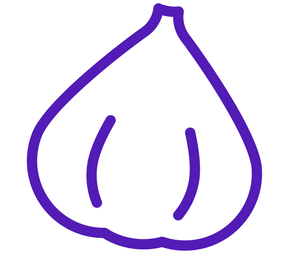Orofacial granulomatosis (OFG) is a chronic inflammatory disorder that primarily affects the mouth and lips. It is a relatively rare condition that can be difficult to diagnose. The most common symptoms of OFG are lip swelling and redness, but mouth ulcers and cracked lips can occur and the gums and tongue may also be affected. OFG is diagnosed by clinical examination and/or biopsy.
The cause of OFG remains unknown. However, there is some evidence of links to a dietary allergen. A cinnamon and benzoate free diet has been found to result in significant improvements for many patients diagnosed with OFG, and is now frequently recommended as first-line treatment. Typically, OFG symptoms will improve within 6-12 weeks of implementing a cinnamon and benzoate free diet.
To get started on a cinnamon and benzoate free diet, the first step is to understand what benzoates are and to become familiar with the list of foods, drinks and personal care products that may contain them. Benzoates are chemicals used in food and drinks as a preservative, in order to prevent spoilage and prolong shelf life. As a result, benzoates are found in a wide range of processed foods and fizzy drinks. Following a cinnamon and benzoate free diet requires very careful reading of food labels. Benzoates include any preservatives with E numbers from E210 to E219*.
To avoid consuming any of these preservatives it is often simpler to avoid packaged food, and to eat fresh food cooked from scratch at home whenever possible. However, a complicating factor is that benzoates can occur naturally in some foods, which also need to be excluded on the cinnamon and benzoate free diet. Common foods that contain benzoates include:
- fruit such as apples, grapefruit, navel oranges, papaya, all stone fruit (apricots, cherries, peaches, nectarines, plums, prunes), all berries (blackberries, blueberries, cranberries, raspberries, strawberries)
- any juice, jam, jelly or dried fruit made from the above
- avocado, pumpkin, kidney beans, soy beans, spinach
- tomato puree, sundried tomatoes (but fresh tomatoes are permitted as benzoate levels are much less concentrated)
- most sausages and salami
- cod
- blue cheese
- spiced or fruit flavored yogurt
- cocoa, chocolate
- tea
- honey
- chewing gum and chewy sweets
- acid foods and drinks such as pickles, bottled sauces, vinegar, marinated fish, beer, fizzy drinks and fruit squash
Cinnamon must obviously also be eliminated, which means generally avoiding any foods that list spice or spice extract as an ingredient, or drinks such as mulled wine. If in doubt, it is best to avoid spicy sauces.
Finally, some toothpastes and oral hygiene products contain added cinnamon and benzoates, as do certain deodorants, cosmetics and medicines, so once again it is very important to always check labels.
There is a Benzoate Intolerance Support group on Facebook. If anyone knows of other support groups or useful online resources, please drop me a line and I will add the link to this fact sheet. Any recipes on this website that are tagged “benzoate-free” are suitable for a cinnamon and benzoate free diet.
* Here is a complete list of benzoate-based preservatives:
-
E210 Benzoic acid E211 Sodium benzoate E212 Potassium benzoate E213 Calcium benzoate E214 Ethyl 4-hydroxybenzoate or Ethyl para-hydroxybenzoate E215 Ethyl 4-hydroxybenzoate, sodium salt or Sodium ethyl para-hydroxybenzoate E216 Propyl 4-hydroxybenzoate or Propyl para-hydroxybenzoate (not a permitted preservative in the EU but may be found in imported products) E217 Propyl 4-hydroxybenzoate, sodium salt or Sodium para-hydroxybenzoate (not a permitted preservative in the EU but may be found in imported products) E218 Methyl 4-hydroxybenzoate or Methyl para-hydroxybenzoate E219 Methyl 4-hydroxybenzoate, sodium salt or Sodium methyl para-hydroxybenzoate
